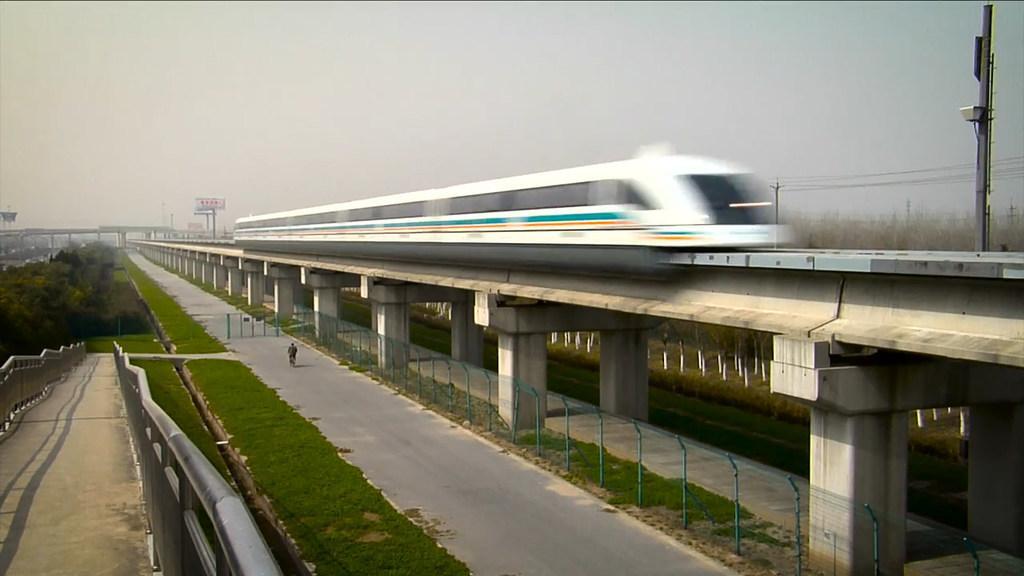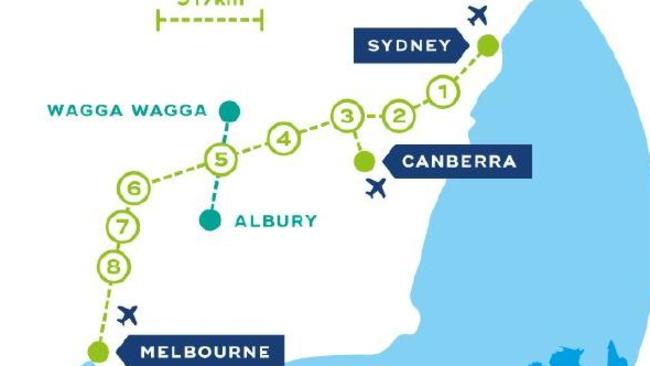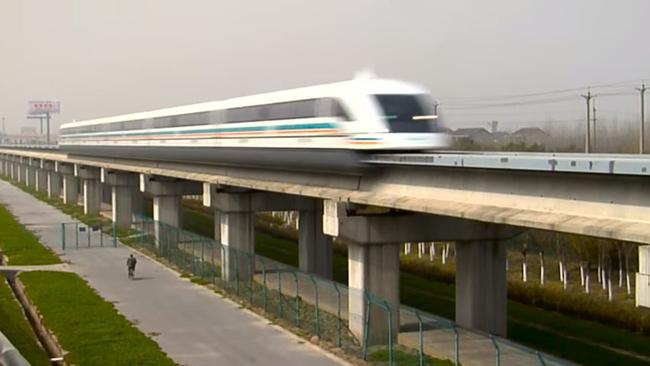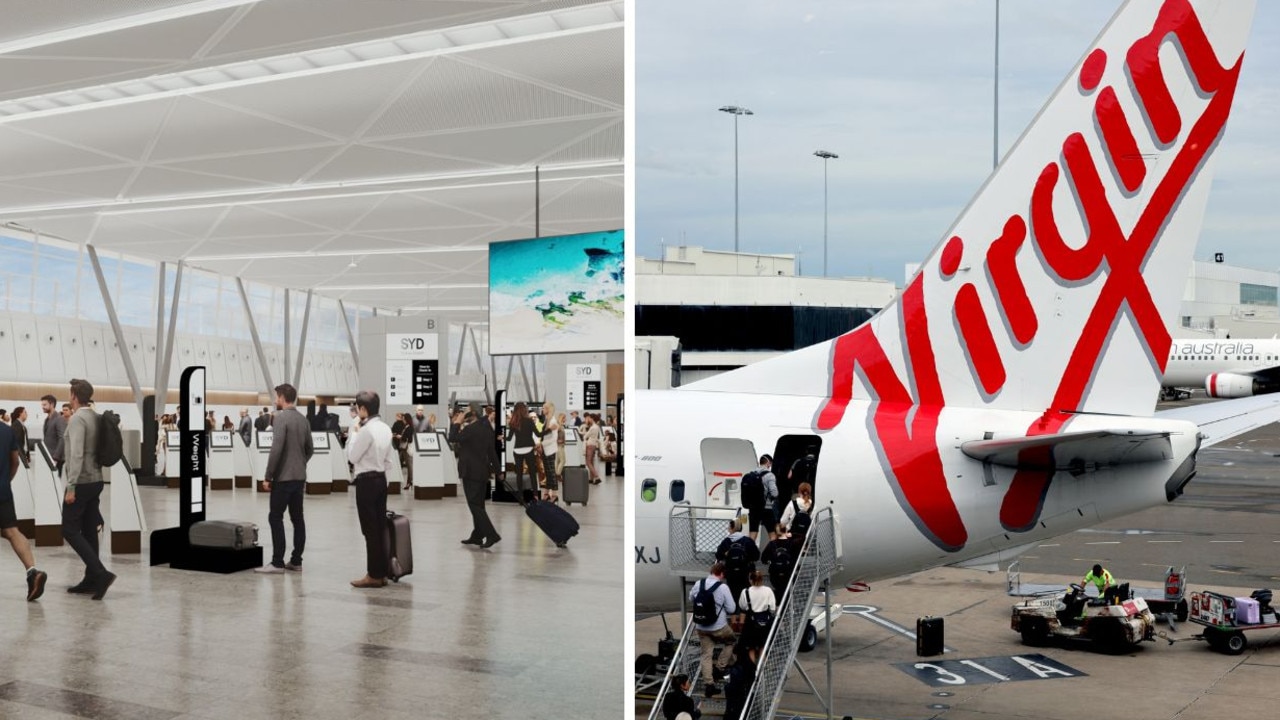Why it’s the right time for an Aussie fast train
IT’S been knocked back time and time again for the past 50 years, but the latest company to propose high speed rail says it’s a matter of urgency.

Travel
Don't miss out on the headlines from Travel. Followed categories will be added to My News.
HIGH speed rail is something that Australians have learnt not to get too excited about.
The possibility of getting from Sydney to Melbourne in less than two hours without the fuss of getting to and from airports and waiting for infrequent flights in uncomfortably crowded airport lounges has been routinely floated, debated, and taken off the table by governments and thought leaders for about half a century.
But the company behind the latest, and one of the more advanced proposals for a fast train system along Australia’s east coast, says there’s no reason why construction can’t start by 2021.
Speaking at a forum hosted by the Australian Property Council in Sydney on Friday, chairman of Consolidated Land and Rail Australia — the company proposing the $50-$70 billion high speed rail system connecting Sydney, Melbourne, and eight brand new cities in-between — Nick Cleary, acknowledged the doubts surrounding fast trains in Australia.
“For 50 years it’s been debated, and certainly it’s the feeling of most people that it’s a great idea that will never happen,” he told the gathering of property industry heavyweights.
“But we want it to happen, and it’s something that we feel Australia wants to happen.”
Mr Clearly and his backers, including former premiers and federal ministers believe — although it’s been heard before — that now is the time for high speed rail.
THE STATUS QUO IS NOT AN OPTION
The CLARA (Consolidated Land and Rail Australia) project, which was formally announced in July, proposes the development of six new “advanced, sustainable, smart cities” each built to accommodate around 400,000 people and provide jobs, services, and vibrant, connected communities to that population.
Each of those regional centres would be funded by value capture — the profits made from the transformation of existing farmland into new developments that would be expected to benefit from the new infrastructure and increase in value.
That funding model would pay for the development of the new cities, and the high speed rail network that connects them to the nation’s two largest capitals, in full, within 50 years, Mr Cleary said.

Although the fast train is the exciting part, Mr Cleary says the proposal is really, unashamedly, a real estate land development, and a necessary one.
He says CLARA offers a solution to a problem that Australia desperately needs solved.
“Sydney and Melbourne have an overcrowding problem,” Mr Cleary said.
“We’re jamming a lot of people in, we’re moving people further out, congestion is at an all-time high, and moveability is certainly reducing on a daily basis.
“It’s time to recognise that there is a problem with that, and even if we are working on solving the problem that’s there now and that currently exists, we also have to acknowledge that our population grows both in Sydney, Melbourne, and in Australia, we need an alternative solution.”
He says the status quo “is not an option”, but development of new, connected communities is.
The desire to live in urban communities is part of the inner city population problem, which is why CLARA is proposing building regional communities that are not only connected to major cities, but resemble them as well.
“People want to live in urban environments, by 2031, 75 per cent of every one in the world will live in an urban environment, so what we want to make sure of is that in Australia we embrace that, that we build communities that are more connected than they have ever been,” Mr Cleary said.
“The whole point of opening up regional Australia is about opening up the potential and the opportunity that exists within regional Australia. It’s unleashing the monster that is the regional economy, and it can be certainly a thriving network of cities that act as a bridge between Sydney and Melbourne creating an absolute world powerhouse to move forward with.”
WE NEED TO GET OUT OF THE CITIES
Former NSW Premier Barry O’Farrell is one of CLARA’S key backers.
He joins fellow former state premier Steve Bracks and recently retired trade minister Andrew Robb on the company’s advisory board.
Informed by his time in government, Mr O’Farrell told the Sydney power lunch he supported the development of regional cities.
“I’ve never understood why successive governments have allowed the drift to the east in NSW when we need to continue to have vibrant regional cities,” he said.
“We need to ensure there are opportunities there not just for employment, not just first class health and other services, but opportunities for young people whether they live in those regions now or whether they will want to live in those regions in the future.”

Mr O’Farrell said the proposal was an opportunity to engage in “proper regional development”, and that while the new cities were necessary developments, the byproduct — the high speed rail system — and the funding plan that it claims wouldn’t leave tax payers out of pocket, was the real selling point.
“If you come at it in that way (high speed rail) appears to me to be a realisable dream,” he said.
“If you come at it from the usual public sector model, which is to say let’s build high speed rail between Sydney and Melbourne, and get to the end of it and present it to cabinet or cabinets, and it comes with a huge price bill, then there is an enormous concern. And that’s why we’ve seen, over successive attempts, nothing ever happens.”
WHAT’S STANDING IN THE WAY?
Like any major infrastructure project, CLARA needs the backing of all three levels of government, and that’s where things are stalling.
As Mr O’Farrell explained, the project would need the backing of Federal Government to ensure not only the route that connects the states, but technology that’s consistent from state to state. It would need the authority of state governments to put in place right of way for rail lines. As with any state-significant development, there would be a planning approval process which would sit within state departments, as well as approval and input from local councils.
Mr O’Farrell said he had seen “willingness to consider” the project and issues from government figures, though there was scepticism around the radical funding plan.
“Where I see the scepticism in the discussion around this proposal, it’s where Nick (Cleary) says to the Prime Minister or the premiers ‘there’s no capital cost for you’, you can almost see them wanting to look around the back end to see what the trick is,” he said.
“This proposal is a development proposal, a cities proposal, but also pays for a high speed rail system which is long overdue.”

Mr Cleary admitted there had been some push back from authorities.
“What’s standing in our way is political will, and I don’t say that in a bad way, that’s what we’ve got to overcome,” he said.
“We think that comes from a community level, and we’ve had tremendous support from local government from right across our network ... that should give the government a certain level of satisfaction that there is community will behind it and open up the gates for us.”
SO IT COULD ACTUALLY HAPPEN?
For a business selling a project that’s so similar to so many that have been knocked back again and again by governments over the past decades, these guys are really confident.
They’ve faced the cynicism that came when they first announced their plan, and criticism similar to what was hurled at US company Hyperloop One when it announced using Australia as a possible testing ground for its super fast transport system this week.
But, for some reason, they reckon they can pull it off.
“There is no reason, with political will, that we can’t have this proposal under construction by 2021, and depending on when we start, that will mean bringing cities online within five years,” Mr Cleary said.
“We’ve already been able to secure around 40 per cent of the sites that we need to build our cities on. In regards to the corridor itself, most people — the majority of Australians — believe that a high speed rail system in Australia will be built at some stage, whether it be in 50 years or whether it be right now.
“But there’s never been a better time than right now to secure that corridor. What we’re asking the government is to certainly take that premise as well and work with us on our alignment.”
CLARA met with Prime Minister Malcolm Turnbull in April (and perhaps picked up a line or two from him, looking at Mr Cleary’s last quote).
The group is consulting with councils and state governments to discuss development, and is seeking the co-operation and collaboration of the property industry.
The entire project, if successful, is expected to take 35 — 50 years to complete.

Originally published as Why it’s the right time for an Aussie fast train



